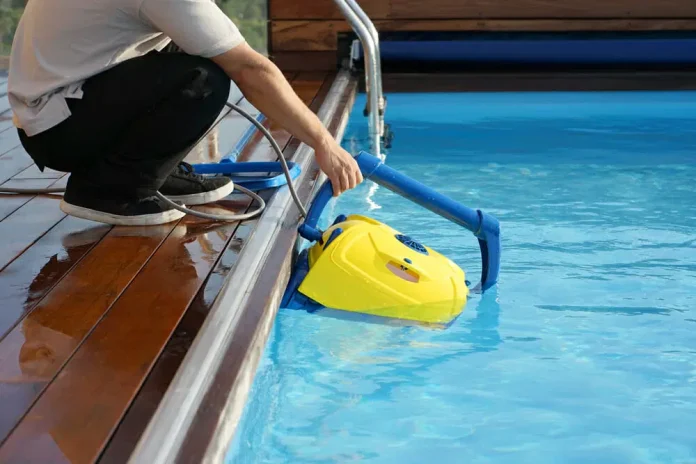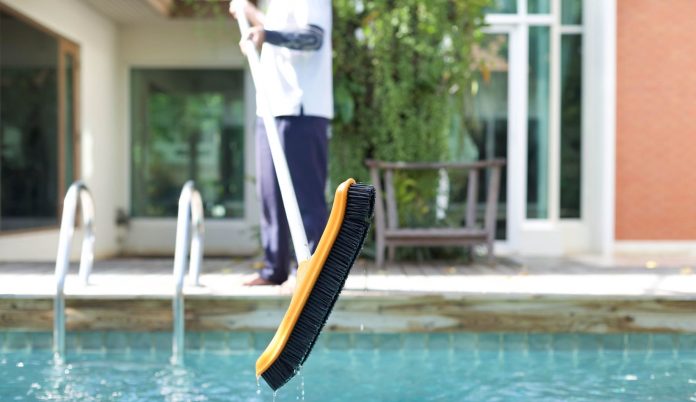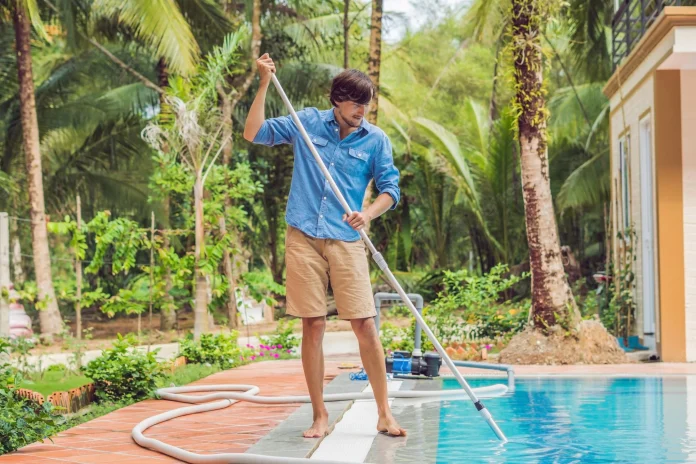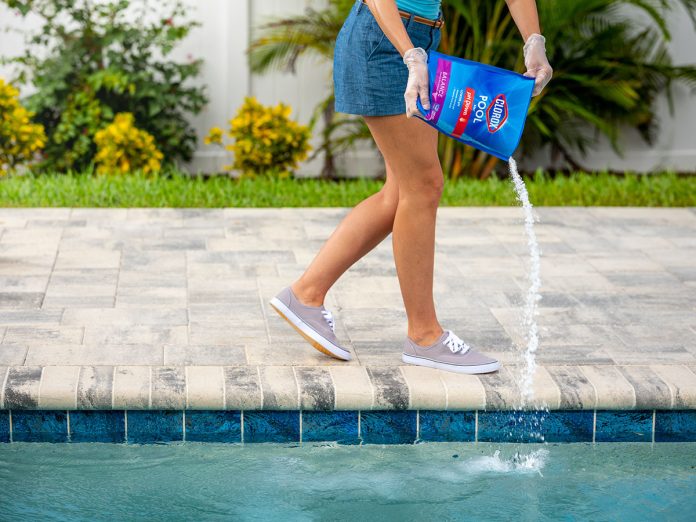
Table of Contents
Summer is the time when those who have a pool can truly enjoy it. However, to enjoy it, you should keep it clean and well maintained. That means that you must not have stains or water full of algae.
Although fiberglass pools are considered somewhat more resistant to algae – this does not mean that you will not have them. Therefore, here is the answer to the question of how to prevent and stop algae from spreading in your fiberglass pool.
Oh, No! We Have Algae In Our Lovely Pool!

Summer is the right time to relax, enjoy the sun – and if we have a pool, cool off in it. However, all the fun goes down the drain if the water is green and looks dirty. The reason for this phenomenon is most often algae that appear in swimming pools.
Although fiberglass pools are considered to be quite resistant to algae, this doesn’t mean that the material is immune to the appearance of algae in the summer. When something like that happens, you’ll notice that the pool water looks blurry, almost dirty – and it’s no longer crystal blue, but a dull greenish color. And what actually are algae, and how to recognize them?
What Are Algae, And Why Do They Appear In Swimming Pools?

Algae are tiny, microscopic plants that can appear in your fiberglass pool. Their appearance is most often caused by natural factors, such as rain and wind – but they can also appear in contact with common things such as beach toys or bathing suits.
We have to emphasize that these micro-plants reproduce very quickly, and it can be quite an issue for pool owners because the surface of the water takes on a different color – and these small plants grow and bloom very quickly if they are not treated properly and effectively.
The Major Reasons Why Algae Appear
As we have mentioned, the reasons for the appearance of algae in our pools may be various. However, most often, algae appear as a result of external and atmospheric factors – such as rain, wind, or debris like dust, leaves, etc. However, in addition to these factors, it is also significant to mention the maintenance.
Not only must pool maintenance be regular – it must be done correctly and with the use of resources that will create a good chemical balance of the water. If we overlook some of these things – these micro-plants can easily settle in and spoil our summer fun.
How Do You Get Them Out Of Your Pool?
First of all, it is important what kind of pool you have. According to The Pool People, unlike other types, fiberglass pools are somewhat more resistant to the appearance of algae – and with regular and proper maintenance, you probably won’t have this problem.
However, the algae may still appear in those made of fiberglass – but it is mostly due to our fault. That means that we probably didn’t maintain it properly. Therefore, here is how you can avoid the appearance of algae or get rid of them if they appear in your fiberglass pool.
-
The most important thing is keeping your pool clean

Waste plays a crucial role in the appearance of algae. Therefore, if you do not want them to appear – you must maintain the cleanliness and disinfection of your fiberglass pool. This implies regular cleaning of the bottom and walls, the water chemical balance – and the correctness and proper working of the pump and filters.
Namely, dirty filters can often generate a big issue because they often retain leaves, sand, etc. Such soil is suitable for the development of algae – so if they appear, start by cleaning your fiberglass pool as well as the filter.
-
Change the filter if it’s not adequate
The lack of good filtration disrupts water quality and conditions the appearance of algae. But why is the appearance of algae in those made of fiberglass connected to the filtration of the water? It happens because of the fact that insufficient water circulation is precisely one of the main causes of their occurrence.
Therefore, if the filter is not working well, or you have an inadequate filter, for example, a smaller one than the size of the pool requires – there will be a high probability of weaker water circulation in specific parts of the pool. That means that there will be stagnant water – which leads to the appearance of algae. Therefore, always make sure to check the operation of the filter, or if the filter is unsuitable – change it.
-
Check the status of chlorine

A lack of chlorine in the water is also a frequent reason for the growth of algae and their blooms. Namely, if the pool is not regularly or sufficiently chlorinated – algae can multiply very quickly and cause the water to become completely green in just one day instead of being crystal clear and blue.
In addition, the water that is insufficiently treated with chlorine is also a paradise for mosquitoes and other insects that make their nests next to the water. Therefore, do not forget to treat the water with chlorine to the extent determined by your pool size.
The Fight Against These Micro Plants And Are They Dangerous To Health
In the fight against algae, you cannot do without the previously mentioned things. However, the key to the fight against them is the use of specialized means, so-called algaecides, which remove algae from the pool surface. Although algae generally do not pose a health risk – they will greatly damage the appearance of your fiberglass pool.
Also, in some rare situations, the reproduction of algae can quickly get out of control – and then they can produce secondary substances that are harmful to human health. Therefore, use the means that will prevent them from spreading. That way you will make sure your fiberglass pool is safe.
















